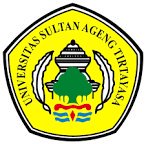THE EFFECT OF INDONESIAN SPICE EXPORT TRADE LIBERALIZATION ON COMPETITIVENESS AND COMPETITIVENESS IN INTERNATIONAL MARKETS
Abstract
Since long time ago, Indonesia has had a comparative advantage because of its geographical advantage in spice commodities. In the era of liberalization, in order to be competitive in the same industry, Indonesian spice commodities must increase their export share by having a distinct advantage compared to competitors from other countries. Therefore, the purpose of this study is to determine the effect of Indonesia's trade liberalization based on competitiveness with competing countries and the level of competition for Indonesian spice commodities in the international market. The analytical methods used are Revealed Comparative Advantage (RCA), Export Similarity Index (ESI), and Export Overlapping Index (IEO) which are discussed descriptively using secondary data from UNComtrade for 1989-2021. Trade liberalization is indicated by Indonesia's entry into the WTO, AFTA and ACFTA. The results of the analysis show that even though Indonesia has very strong competitiveness, the existence of trade liberalization is not enough to increase Indonesia's competitiveness because the international market is increasingly open. The level of competition for Indonesian spice exports with its competitor countries tends to decrease. The existence of trade liberalization makes each country increase its trade specialization in order to expand its market share. Indonesia needs to improve quality as well as standardize and increase differentiation for spice products in order to maintain and expand its market share so that it can be competitive in the international market.
Keywords
Full Text:
PDFReferences
Abdat, H. S., Santoso, S. I., & Nurfadillah, S. (2022). Daya Saing Komoditas Vanili Indonesia di Pasar Internasional. Jurnal Ekonomi Pertanian Dan Agribisnis, 6(3), 1084. https://doi.org/10.21776/ub.jepa.2022.006.03.28
Aida, N., & Riyanto, F. D. (2021). Pertumbuhan Ekonomi dan Kemiskinan Indonesia: Analisis Dampak Liberalisasi Perdagangan pada Mitra Dagang Utama. Jurnal Akuntansi, Keuangan, Dan Manajemen, 2(3), 243–253. https://doi.org/10.35912/jakman.v2i3.107
Amin, K. (2015). Kebijakan Liberalisasi Perdagangan Indonesia di Sektor Pertanian. Jurnal Interdependence, 3(1), 70–81.
Anggrasari, H., & Mulyo, J. H. (2019). The trade of Indonesian spice comodities in international market. Agro Ekonomi, 30(1), 13–26.
Anggrasari, H., & Mulyo, J. H. (2022). Tingkat kemiripan dan kompetisi struktur ekspor komoditas rempah-rempah Indonesia di Pasar Internasional. SEPA: Jurnal Sosial Ekonomi Pertanian Dan Agribisnis, 19(1), 11–20.
Anggrasari, H., Perdana, P., & Mulyo, J. H. (2021). Keunggulan Komparatif dan Kompetitif Rempah-Rempah Indonesia di Pasar Internasional. Jurnal Agrica, 14(1), 9–19.
Balassa, B. (1965). Trade liberalisation and revealed comparative advantage. The Manchester School, 33(2), 99–123. https://doi.org/https://doi.org/10.1111/j.1467-9957.1965.tb00050.x
Balqis, P., & Yanuar, R. (2021). Daya Saing Ekspor Lada Indonesia di Pasar Amerika dan Eropa. Forum Agribisnis, 11(2), 182–194. https://doi.org/10.29244/fagb.11.2.182-194
Budiyanti, E. (2017). Dampak liberalisasi perdagangan terhadap pertumbuhan ekonomi di Indonesia. Kajian (Pusat Penelitian Badan Keahlian DPR RI), 4(5), 45. https://doi.org/10.15373/2249555x/may2014/105
Erlat, G., & Ekmen, S. (2009). Export similarity and competitiveness: The case of Turkey in the EU market. Anadolu International Conference in Economics, 1–27.
Finger, J. M., & Kreinin, M. E. (1979). A Measure of `Export Similarity’ and Its Possible Uses. The Economic Journal, 89(356), 905. https://doi.org/10.2307/2231506
Haryono. (2014). Memperkuat Daya Saing Produk Pertanian (Haryono (ed.)). IAARD Press.
Hermawan, I. (2015). Daya saing rempah indonesia Di pasar Asean periode pra dan pasca krisis ekonomi global. Buletin Ilmiah Litbang Perdagangan, 9(2), 153–178. http://jurnal.kemendag.go.id/index.php/bilp/article/view/6/3
Hidayah, M., Fariyanti, A., & Anggraeni, L. (2022). Daya Saing Ekspor Cengkeh Indonesia. Jurnal Ekonomi Pertanian Dan Agribisnis, 6(3), 930. https://doi.org/10.21776/ub.jepa.2022.006.03.14
Ibrahim, Permata, M. I., & Prabowo, W. A. (2016). Dampak Pelaksanaan Acfta Terhadap Perdagangan Internasional Indonesia. Ekonomi Moneter Dan Perbankan, 4(2), 277–295.
Kurniawati, I. (2014). Dampak ACFTA Terhadap Perdagangan Sektor Industri dan Pertanian Indonesia (Studi Komparatif Indonesia-China dan Indonesia-Vietnam). Eko-Regional, 9(2), 114–124.
Mahdi, N. N., & Suprehatin, S. (2021). MARKET’S POSITION OF INDONESIAN PEPPER IN THE GLOBAL MARKET Naufal. Jurnal Ekonomi Pertanian Dan Agribisnis (JEPA), 5(2), 595–605.
Mazzlin, N. E., Widayanti, S., & Nugroho, S. D. (2022). Analisis posisi komoditas jahe indonesia di pasar internasional. 2748(105).
Narayan, S., & Nguyen, T. T. (2016). Does the trade gravity model depend on trading partners ? Some evidence from Vietnam and her 54 trading partners. International Review of Economics and Finance, 41, 220–237. https://doi.org/10.1016/j.iref.2015.08.010
Ramana, F., & Retnosari, L. (2018). Analysis of Priority Countries and Products for Indonesian Export Diversification in Latin America. International Journal of Industrial Distribution & Business, 9(8), 17–26.
Sabaruddin, S. S. (2016). Dampak Liberalisasi Perdagangan RI-China Terhadap Perubahan Perdagangan dan Kesejahteraan Masyarakat Indonesia: Ssebuah Pendekatan Ekuilibrium Parsial (SMART Model) dan Pemanfaatan Sistem Neraca Sosial Ekonomi 2008. Jurnal Ekonomi Dan Bisnis, 17(3), 33. https://doi.org/10.24914/jeb.v17i3.287
Sae. (2017). Rempah Nusantara Pilihan Dunia. Kompasiana. https://www.kompasiana.com/sae/59f7edfe74bbb019264754e4/remapah-nusantara-pilihan-dunia?page=all
Saputro, W. A., & Anggrasari, H. (2021). The Role , Development and Opportunities of Spice Commodities for International Relations between Indonesia and Other Countries in the International Market. Journal of Advance in Social Science and Policy, 1(1), 154–166.
Suhartini, N. A., Widi, R. H., & Dasruman, D. (2021). Daya Saing Pala, Lawang, Dan Kapulaga Indonesia Di Pasar Internasional. Jurnal Agristan, 3(2), 84–110. https://doi.org/10.37058/agristan.v3i2.3685
Wang, P., & Liu, X. (2015). Comparative analysis of export similarity index between China and EU. International Conference on Management Science and Management Innovtion, 222–227.
Yao, A., & Wan, L. (2014). Competitiveness of China’s agricultural product export to the Unite States of America. Asian Agricultural Research, 6(12), 9–13.
Zuhdi, F., Rahmadona, L., & Maulana, A. S. (2021). The EXPORT COMPETITIVENESS OF INDONESIAN SPICES TO EUROPEAN UNION-15. Agric, 32(2), 139–162. https://doi.org/10.24246/agric.2020.v32.i2.p139-162
Zuhdi, F., & Rambe, K. R. (2021). Daya Saing Ekspor Cengkeh Indonesia Di Pasar Global. SEPA: Jurnal Sosial Ekonomi Pertanian Dan Agribisnis, 17(2), 165. https://doi.org/10.20961/sepa.v17i2.43784
Zulkarnaen, I., Oktaviani, R., Tambunan, M., & Yulius, Y. (2012). Analisis Dampak Liberalisasi Perdagangan Kawasan Ekonomi Asia Terhadap Kinerja Ekonomi Makro Asean. Jurnal Ekonomi Dan Kebijakan Pembangunan, 1(2), 104–119. https://doi.org/10.29244/jekp.1.2.2012.104-119
DOI: http://dx.doi.org/10.33512/jat.v16i1.20163
Refbacks
- There are currently no refbacks.
Copyright (c) 2023 Herdiana Anggrasari, Dhika Cahyasita, Dinda Dewi Aisyah

This work is licensed under a Creative Commons Attribution-NonCommercial-ShareAlike 4.0 International License.
Editorial Office
Jurnal Agribisnis Terpadu
Jurusan Agribisnis Universitas Sultan Ageng Tirtayasa
Jl. Raya Palka KM. 03 Sindangsari, Kecamatan Pabuaran, Kabupaten Serang,
Provinsi Banten 42163 Telp. (0254) 3204321
Email: [email protected]






